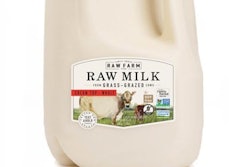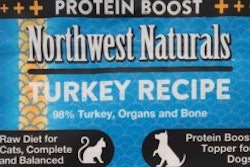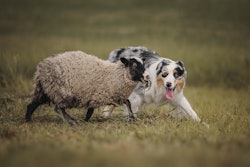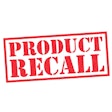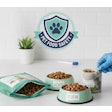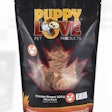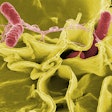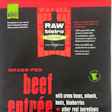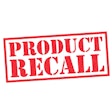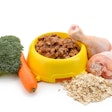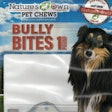
The Oregon Department of Agriculture unequivocally stated that Northwest Naturals raw, frozen pet food was the source of H5N1 highly pathogenic avian influenza (HPAI) that infected and led to the death of a pet cat. However, the owner of Pacific NW Pets, where the product was sold, told Pets+ a different side of the story than presented by state officials. The owner, Jennifer Flanagan, stated the infected cat was not a strictly indoor cat, contradicting the Oregon Department of Agriculture press release. The cat, named Villain, frequently accompanied her owner into Pacific NW Pets, Flanagan said, and appeared in social media posts on outdoor excursions, reported Pets+.
Cats that are allowed outdoors have the potential to encounter wild birds infected with HPAI and contract the virus after eating or interacting with either live or dead birds. Even an environment contaminated with HPAI, or bird flu, could be a vector for infecting a cat, according to the Centers for Disease Control and Prevention.
Another question in this case is how the food safety methods followed by Northwest Naturals may have failed. Northwest Naturals states in a FAQ on its website that the company uses high-pressure processing to reduce the potential for pathogens to survive in their raw products. The company does not yet know why the processing seems to have been ineffective at eliminating the virus.
In a letter to distributors quoted by Pets+, Northwest Naturals noted that more than one million pounds of raw turkey have been processed since the batch of affected turkey involved in the recall went through the system. Also, there had been no other reports of HPAI contamination or infection related to the two recalled lot codes sold in August 2024 prior to the Oregon Department of Agriculture alerting the company of its findings.
How high pressure processing works
High-pressure processing creates intense pressure uniformly around a pet food container, usually in a sealed tank of water. That pressure is transferred instantly and equally throughout the raw pet food.
Under this high pressure, disease-causing microorganisms and food-spoiling enzymes are deactivated. The technique works regardless of package size and shape, as long as the container can withstand the processing conditions.
The pressures used in HPP causes few physical changes to the ingredients since the pressure doesn’t seem to seriously affect covalent bonds (a type of atomic-scale attraction) in foods, according to research published in the book “Ultra High Pressure Treatments of Foods.”
High pressure processing costs result from operating pressure, hold time at pressure, and operating costs for maintenance, power and labor. The price of high-pressure equipment increases exponentially with increasing operating pressure.
Precise combinations of pressure and time are needed to neutralize pathogens in specific combinations of ingredients, volumes and other factors in high-pressure processing. These combinations would need to be proven to inactivate key food pathogens such as E. coli O157:H7, Listeria spp., Salmonella spp., or Staphylococcus spp. in raw pet foods. HPAI is a virus. High pressure processing should be capable of inactivating it, since research on other viruses suggests that the intense pressure may denature, or unravel, proteins in the virus’ capsid. However, HPAI is a relatively new threat, and the exact combination of pressure and time needed to ensure inactivation may still need to be determined for raw pet food formulations.
Public health officials and pet food companies continue attempting to determine how HPAI repeatedly occurs in pet foods around the world.
Pet cats die of avian influenza associated with raw products in California
On Dec. 31, 2024, the Los Angeles County Department of Public Health warned residents not to feed their pets Monarch Raw Pet Food sold at several farmers markets in California due to the detection of the highly pathogenic avian influenza (HPAI) virus in product samples. A house cat that consumed this product tested positive for the virus. Four other house cats from the same household are presumed to have also been positive for HPAI after consuming the product.
“Residents should avoid consumption of all raw milk and raw meat products and not feed these to their pets,” the Department said in a press release.
On Dec. 18, the Department confirmed H5N1 HPAI in four house cats that consumed recalled Raw Farm raw milk. The cats became sick and died. Two infected indoor cats from one household consumed raw milk linked to a recall of raw milk and cream products prior to onset of symptoms. The infected cats died after severe worsening of their illness and subsequently tested positive for HPAI, which the Department later confirmed. Additional pets in the home are under quarantine.
The department then investigated additional possible cases of HPAI in three cats from a different household. One cat tested positive for the influenza virus. Two other cats in the household died after worsening respiratory illness, later confirmed to be HPAI. These cats were not known to be exposed to raw milk. However, public health is investigating other possible sources of infection, including raw meat.
There have been no human cases of bird flu associated with exposure to these cats yet identified.
Oregon cat died after eating avian-influenza-contaminated raw pet food
In the aforementioned case involving Northwest Naturals, one cat caught highly pathogenic avian influenza (HPAI) virus and subsequently died after eating Northwest Naturals brand 2lb Feline Turkey Recipe raw frozen pet food. Portland, Oregon-based Northwest Naturals recalled one batch of this product after it tested positive for HPAI. As of Dec. 24, no human cases of HPAI have been linked to this incident.
Testing conducted by the U.S. Department of Agriculture’s (USDA) National Veterinary Services Laboratories (NVSL) and the Oregon Veterinary Diagnostic Laboratory (ODVL) at Oregon State University confirmed that a house cat contracted H5N1 and died after consuming the raw frozen pet food.
“We are confident that this cat contracted H5N1 by eating the Northwest Naturals raw and frozen pet food,” ODA State Veterinarian Dr. Ryan Scholz said in a press release. “This cat was strictly an indoor cat; it was not exposed to the virus in its environment, and results from the genome sequencing confirmed that the virus recovered from the raw pet food and infected cat were exact matches to each other.”
The Oregon Health Authority (OHA) and local public health officials are monitoring household members who had contact with the cat for flu symptoms.
38 cats died after eating bird-flu-tainted cat food in 2023
The cases in Oregon and California bear similarities to one in South Korea in which 38 out of 40 infected cats died within a month. That 2023 HPAI outbreak occurred in shelter cats that had all been kept indoors, so it seemed unlikely that wild birds had spread the pathogen to the cats. Instead, the virus may have spread to the cats through their food. Investigators with South Korea’s Ministry of Agriculture, Food and Rural Affairs (MAFRA) detected influenza A(H5N1) virus in cat food from one of the shelters. The cat foods were Balanced Duck and Balanced Chicken manufactured by Nature's Raw at its facility in Gimpo, west of Seoul. The Ministry stated that the company had failed to follow necessary sterilization steps since May 25 due to an equipment malfunction. MAFRA officials then ordered the recall of all cat food batches considered at risk of harboring the virus.
A team of researchers examined this outbreak and published a summary in Nature Communications, along with suggestions for controlling future cross-species disease transmission.
“The influenza A(H5N1) outbreaks in the cat shelters in South Korea, along with an increasing number of reports of influenza A(H5N1) infection in mammals, suggest the need to enhance the effectiveness of infectious disease surveillance and prevention in any settings where a group of potentially susceptible animals are kept in close contact,” they wrote. “This is particularly important for groups of animals that typically are not covered by regulatory efforts aimed at maintaining or improving animal health and welfare standards. These animal groups could not only provide environments for cross-species viral transmission, promoting zoonotic risk, but could also serve as sentinels for detecting such events, thereby offering opportunities to assess and then mitigate such risk.”
FDA offers guidelines to reduce HPAI risk in cats, emphasizes pet food safety
The U.S. Food and Drug Administration (FDA) provided information about ways to reduce the risk to pets of contracting H5N1. The agency issued recommendations for safe feeding practices after investigations revealed links between HPAI infections in felines and the consumption of contaminated or improperly processed food products.
Recent reports have shown that domestic and wild cats, including species such as tigers, mountain lions and lynx, are highly sensitive to HPAI. There have been several recent investigations indicating transmission of HPAI to cats through food, most often unpasteurized milk or raw or undercooked meats. Cats should not be fed any products from affected farms that have not been thoroughly cooked or pasteurized to kill the virus. Cats should also be kept from hunting and consuming wild birds.
The Centers for Disease Control and Prevention (CDC) highlighted a concerning case in its July 2024 report. Domestic cats on a dairy farm contracted HPAI after being fed unpasteurized milk from cows infected with the virus. The cats displayed neurological symptoms and later died from systemic influenza infections.
The U.S. Department of Agriculture (USDA) is actively monitoring HPAI in wild mammals, including feral and domestic cats, through its surveillance and testing program. While dogs are less susceptible to the virus, the FDA advises that similar precautions be taken for canines to mitigate risk.
Avian influenza or bird flu naturally spreads among wild aquatic birds worldwide and can infect domestic poultry and other bird and animal species, according to the World Health Organization. Highly pathogenic avian influenza is a subtype of the virus. It can cause severe illness and high mortality rates in domestic poultry and wild birds. The viruses can devastate poultry industries and have economic repercussions due to trade restrictions. Some varieties, including H5N1, can cross species barriers and may cause severe illnesses in mammals.
Symptoms of HPAI in cats and humans
Cats infected with H5 bird flu can develop severe illness that may include neurologic signs, respiratory signs or liver disease that can rapidly progress to death, according to the Los Angeles County Department of Public Health.
Symptoms in cats infected with H5N1 bird flu may vary and include:
- Loss of appetite
- Tiredness
- Respiratory and/or neurological signs
Symptoms of H5N1 highly pathogenic avian influenza infection in humans may include:
- Eye redness or discharge
- Cough
- Sore throat
- runny or stuffy nose
- Diarrhea
- Vomiting
- muscle or body aches
- Headaches
- Fatigue
- trouble breathing
- Fever


